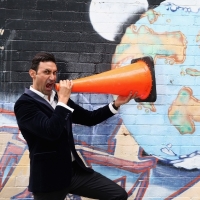

Spice caught up with Tarek Said and Sarah Ewen, founders of Public Speaking for Life, to find out what the big no-nos are in public speaking.
1. Failing to have a clear message
The main purpose of a speech is to deliver a message. If you don’t leave the audience with a clear message then nothing else matters. The sophisticated slides, the dynamic speaking techniques, the funny stories; these will all be wasted without having a clear message. Think of your message as a drink, and your speech as the cup that holds the drink. An eye catching patterned cup may add to the experience, but in the end it is all about the drink that is inside it. Similarly, a funny presentation with clever slides may add to the experience, but these may detract from the key message you are trying to deliver.
2. Absence of a powerful opening and ending
When most people write their speeches, they spend all their time thinking about the body of the speech and tend to forget about the opening and the ending. They usually open their speech with something like:
‘So, yeah, hello, can you hear me.? So … umm.’
And they end it with something like:
‘So, that’s it, I guess, yeah I think I covered everything. So, any questions?’
Remember: The opening of your speech is the point in which the audience decides whether or not they want to continue listening to you, and the end of your speech is where you leave your audience with a call to action. Make sure you invest your energy into crafting powerful openings and endings to captivate your audience.

3. Lack of preparation
The importance of preparation cannot be emphasised enough. Unfortunately many people place little importance on preparation. They write a speech quickly and deliver it without practicing at all. A speech has the potential to propel you to stardom in your career, business or field, and it is therefore worth investing in. When you have the opportunity to deliver a speech, why not pour all your energy into preparing it? Think about it; a movie usually lasts around 100 minutes, yet it takes months, if not years of preparation. Similarly, a speech that last 20 minutes needs weeks of preparation. As Mark Twain said:
“It usually takes more than three weeks to prepare a good impromptu speech.”
4. Treating a speech as a spoken article
Many people write a speech down the way they write an article and then they read it out to the audience. But we have to ask ourselves: In today’s world, we can send articles to thousands of people with a click of a button and they can read it in their own time. Do we really need to read it out for them?
As a speaker, you need to think of yourself as an artist, writer and performer. When you speak, you have additional communication channels available that you don’t have when you write. These channels are your voice tone, your body language and your eye contact. Make sure you use them to engage with your audience and don’t bury yourself in your notes.
5. Thinking the slides are the presentation
The majority of speakers mistake their slides for their presentation. The first (and perhaps the only) thing they do when they prepare a presentation is create the slides. They fill the slides with information, they spend hours designing them and they refer to them as ‘the presentation’, clinging onto the slide pack like a lifeline. But going back to the first point – the presentation in its entirety is the cup and the message is the drink. The slides in this analogy are nothing more than the pattern on the cup. In many presentations, slides are not even needed at all. For example, when we prepare a presentation we first make sure we are very clear about the message we want to deliver, then we write the content down, we practice, practice, practice … and then we decide whether or not slides will add any value. Most often we conclude slides are not needed.
Public Speaking for Life offer the following services to individuals and companies wanting to communicate more clearly.
1. Group courses: They offer group courses for the public and corporate training. Their group sessions comprise of theory, practice and feedback. They focus on number of key elements including mindset, structure, voice, filler words, eye contact, hands and feet, movement and pace
2. Personal coaching: In person or online, they can help with mindset, structure (including PowerPoint), delivery and provide feedback.
3. Video analysis: They provide a video analysis service. To use this service, simply film yourself, send the file and they will provide feedback.
4. Key note speakers: Both Ewen and Said are available for key note speeches and focus on their favourite topic – public speaking. This includes areas such as why public speaking is important, the power of public speaking, the mindset of a public speaker, and how to be an engaging public speaker.






Thank you so much for this insightful piece. I agree that public speakers often fail to deliver their key message due to lack of preparation and improper way of opening and closing their presentation. I came across this blog that also talks about funny presenting habits that public speakers should get rid of: https://michellebowden.com.au/presentation-dos-and-donts/
It talks about what public speakers should do so their speaking success is guaranteed.